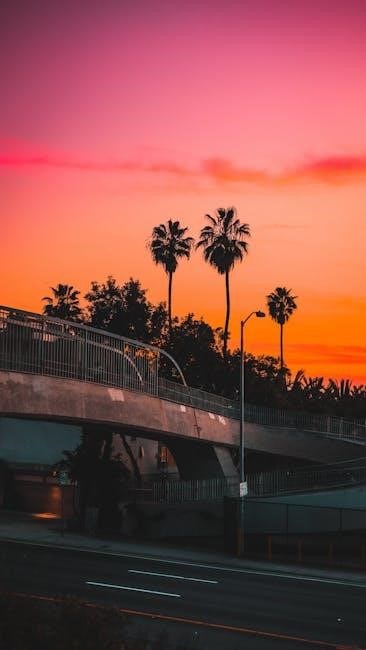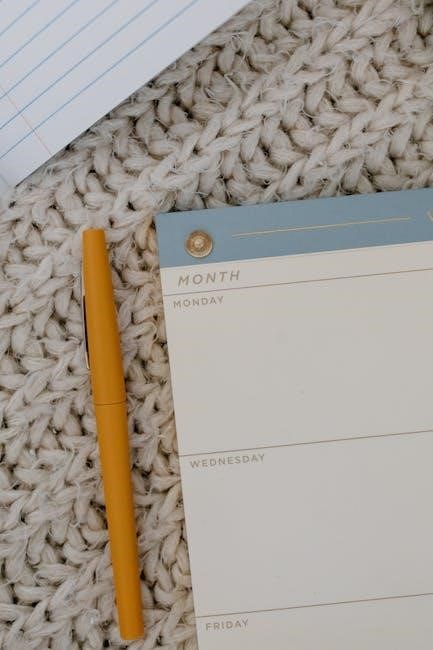Camera shots and angles pdf guides are available online for filmmakers to learn about different techniques and styles, using
various resources
to improve their skills and knowledge in thirty seven words.
Definition and Importance
Camera shots and angles are essential elements in filmmaking, used to convey emotions, ideas, and movement in a scene. The definition of camera shots and angles refers to the way a camera is positioned and moved to capture a scene. Understanding the importance of camera shots and angles is crucial for filmmakers, as it can greatly impact the mood and atmosphere of a film. A camera shot is a series of frames that are filmed without interruption, while an angle refers to the position of the camera in relation to the subject. The importance of camera shots and angles lies in their ability to engage the audience, create suspense! and emphasize specific elements in a scene. Filmmakers use various camera shots and angles to create a visual language that communicates with the audience, making it a vital aspect of storytelling. Using camera shots and angles effectively can elevate a film and leave a lasting impression on viewers.
Types of Camera Shots
Camera shots include extreme long, long, medium, close-up, and extreme close-up shots, each serving a specific purpose in filmmaking using various techniques always.
Shot Sizes
Shot sizes refer to the amount of space an object or subject occupies within a frame, and are used to convey different emotions and ideas.
A shot size cheatsheet can be used to determine the best shot size for a particular scene, and to differentiate between various shot sizes,
such as extreme long shots, long shots, medium shots, close-up shots, and extreme close-up shots.
The size of the shot can greatly impact the mood and tone of a scene, and can be used to guide the viewer’s attention.
Filmmakers use shot sizes to create a specific atmosphere and to draw attention to particular details.
Understanding shot sizes is essential for creating effective camera shots and angles, and for conveying the desired message to the audience.
By using different shot sizes, filmmakers can add depth and complexity to their scenes, and can create a more engaging and immersive experience for the viewer.
Shot sizes are a fundamental element of filmmaking, and are used in conjunction with camera angles and movements to create a wide range of effects.
Camera Angles and Movements
Camera angles and movements enhance scenes using various techniques and styles effectively always online thirty seven words.
Types of Angles
There are several types of angles used in filmmaking, including low angles, high angles, and eye-level angles, which can create different effects and moods in a scene. The low angle shot looks up at the subject, making them appear powerful and dominant, while the high angle shot looks down, making them appear weak and submissive. Eye-level angles, on the other hand, create a sense of equality and intimacy with the subject. Other types of angles include dutch angles, which are tilted to one side, and bird’s eye angles, which are shot directly above the subject. These angles can be used to create a sense of tension, drama, or unease in a scene. Filmmakers can use these angles to convey emotions and ideas, and to guide the audience’s attention. By using a variety of angles, filmmakers can add depth and complexity to their scenes, and create a more engaging and immersive experience for the viewer.
Resources for Learning Camera Shots and Angles
Online resources include camera shots and angles pdf guides and templates for learning filmmaking techniques quickly and easily always available online now.
PDF Guides and Templates
Camera shots and angles pdf guides are essential tools for filmmakers to learn about different techniques and styles. These guides provide detailed information on various camera shots, angles, and movements, including close-ups, mid shots, and wide shots. They also offer tips on how to use these techniques to create a specific mood or atmosphere in a scene. Many online resources offer free pdf guides and templates that can be downloaded and used as a reference. These templates can be customized to fit the needs of a particular project, and can be used to plan and organize camera shots and angles. By using these guides and templates, filmmakers can improve their skills and knowledge, and create high-quality films that engage and captivate their audience. The pdf guides and templates are available for download on various websites, and can be accessed at any time, making it convenient for filmmakers to learn and improve their craft.
Applications of Camera Shots and Angles
Camera shots and angles pdf apply to filmmaking, video production, and photography, enhancing visual storytelling and audience engagement effectively always using thirty seven words.
Environmental Considerations
When considering camera shots and angles, environmental factors play a significant role in the overall visual effect. The location, lighting, and weather conditions can greatly impact the mood and atmosphere of a scene. For instance, a scene shot in a cityscape with tall buildings and busy streets can create a sense of chaos and energy, while a scene shot in a natural landscape with rolling hills and serene lakes can create a sense of peace and tranquility. The camera shots and angles used in these environments can enhance or contrast with the natural atmosphere, adding depth and complexity to the scene. By taking into account the environmental considerations, filmmakers can create a more immersive and engaging experience for their audience, using techniques outlined in camera shots and angles pdf guides to inform their decisions and improve their craft, ultimately producing high-quality visual content.
Camera shots and angles pdf guides provide valuable information for filmmakers to improve their skills and knowledge in thirty seven words using various online resources and techniques.
Camera shots and angles pdf guides are essential tools for filmmakers, providing valuable information on various techniques and styles. These guides are available online and can be downloaded as PDF files, making it easy for filmmakers to access and learn from them. The guides cover a range of topics, including different types of camera shots, such as close-ups, medium shots, and wide shots, as well as various camera angles, like low angles, high angles, and eye-level angles. By using these guides, filmmakers can improve their skills and knowledge, and create more effective and engaging films. The guides also provide information on how to use camera shots and angles to convey emotion, create mood, and tell stories. Overall, camera shots and angles pdf guides are a valuable resource for anyone looking to improve their filmmaking skills and create high-quality films. They offer a wealth of information and can be used to enhance filmmaking techniques.





